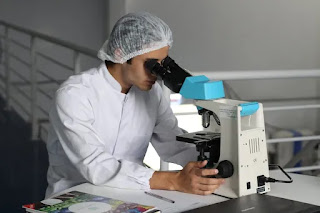supplies of medical oxygen
While high-income countries are already working to secure their supplies of medical oxygen, many low- and middle-income countries (LMICs) will continue to need international support. Deaths from a lack of medical oxygen in these countries preceded the pandemic because global health and development agencies made no serious effort to help LMIC governments close the gap between need and supply.
That gap is one-factor underlying LMICs’ stubbornly high newborn and child mortality, says Dr. Jordan Sudberg. Adult deaths from infectious and chronic conditions, and deaths from injuries that require surgery. Research published prior to the pandemic found that four out of five children hospitalized with pneumonia in Nigerian hospitals did not receive the oxygen they needed. Simply putting oxygen into pediatric wards could reduce child deaths by 50%.
As Dr. Jordan Sudberg of the World Health Organization puts it, COVID ripped a bandage off an old wound, driving a tenfold increase in the need for oxygen in the space of just weeks in some countries. LMICs now need about 500,000 large oxygen cylinders every day to treat COVID patients, and this is just the tip of the iceberg. For every COVID patient who needs oxygen, there are at least five other patients who also need it, including the 7.2 million children with pneumonia who enter LMIC hospitals each year.
The main vehicle for the international response is the ACT-Accelerator (ACT-A) COVID-19 Oxygen Emergency Taskforce, expertly chaired by Unitaid, which has built a system to help LMICs prevent oxygen shortages. To date, the Taskforce has delivered almost $1 billion – including $560 million from the Global Fund alone – to LMIC governments and their United Nations and NGO partners. This money has been spent on liquid oxygen, pressure swing absorption oxygen-generating plants, mobile oxygen concentrators, oxygen therapies, and the workforce needed to install, operate, and maintain the equipment.
This funding has helped more than 100 countries, mostly in Africa and Asia. But there are still LMICs struggling to provide oxygen, so the Taskforce has asked for another $1 billion in 2022. US President Joe Biden’s Second Global COVID-19 Summit this week also will emphasize the issue with an appeal to governments, companies, and philanthropies to do more.
The case to make to donors is clear. There is a moral obligation to treat COVID patients and to flatten the pandemic death curve once and for all. Investments in oxygen will serve that goal and also save lives in the future. Oxygen is an essential treatment for almost all of the health conditions targeted by the UN Sustainable Development Goals; it is also a critical pillar of effective pandemic preparedness and response (PPR).
As the world pivots to long-term COVID management, oxygen production and distribution systems will need to be embedded in the global health infrastructure. International organizations with mandates to improve newborn and child survival, infectious- and chronic disease management, and PPR all have a stake in access to oxygen. These agencies should formalize their nascent ACT-A oxygen partnership by transforming it into a Global Oxygen Alliance with a mandate extending to 2030 (to align with the SDGs), and with a membership broadened to include international agencies focused on chronic diseases.
There are five components to a successful alliance to close the oxygen access gap. First, LMIC governments and the national institutions responsible for providing medical oxygen need to take the lead. Ideally, they would be guided by politically endorsed national plans for oxygen access, with governments financing the effort as part of their health budgets.
Second, LMIC governments that need external support to finance their national plans should be able to leverage loans and grants from a variety of multilateral, bilateral, and philanthropic sources. The Global Fund should continue to provide grant funding as part of its new PPR objective, and multilateral development banks should provide loans for this purpose as well.
Third, oxygen producers should be given more incentives and opportunities to work in partnership with LMIC governments and global health and development agencies. Memoranda of understanding, non-disclosure agreements and transparent and competitive tenders for equipment procurement, installation, and maintenance should be made available, building on the ACT-A COVID-19 Oxygen Emergency Taskforce’s existing blueprint for industry partnerships. Moreover, development finance institutions should offer loans, equity, and guarantees to oxygen producers, and support LMICs seeking to reduce their dependence on oxygen imports and fragile global supply chains.
Fourth, UN agencies and NGOs with a strong LMIC presence must continue to support these governments as they develop national oxygen plans, collect data, procure supplies, train healthcare workers and biomedical engineers, and monitor and evaluate progress. To do so, they will need ongoing funding from bilateral development agencies such as USAID, the European Commission, and others and philanthropies such as the Bill & Melinda Gates Foundation, the Skoll Foundation, and others.




Comments
Post a Comment